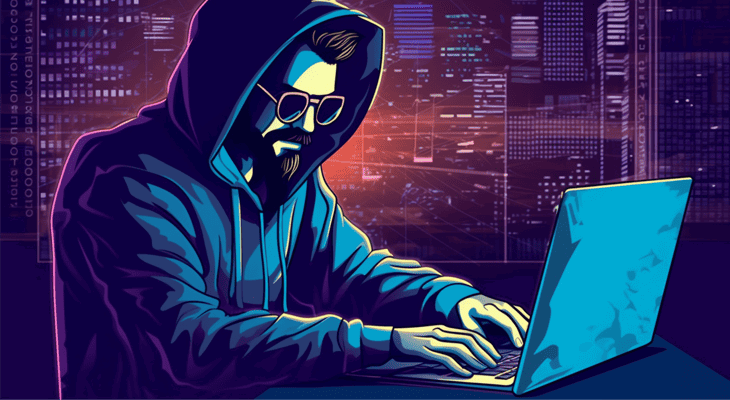In our rapidly evolving digital universe, cyber threats seem to have become as frequent as morning coffee. Businesses, whether they are small startups or well-established enterprises, face the increasing risk of falling victim to cybercriminals keen on exploiting their sensitive data and causing operational mayhem. The first critical step in fortifying your defenses is gaining an understanding of the hackers themselves: their tactics, their motives, and their methodologies. Contrary to popular belief, not all hackers are cyber-villains lurking in the shadows of the internet.
The Hacker Spectrum: White, Gray, and Black Hats
It’s easiest to picture the world of hackers as a spectrum, with each color of hat reflecting the varying degrees of intent and ethics behind their actions.
White Hat Hackers
Let’s start with the good Samaritans of the cyberworld. White hat hackers, often labeled as ‘ethical hackers,’ utilize their skills to protect and defend. They use their in-depth understanding of vulnerabilities to help organizations identify and repair weaknesses in their cybersecurity systems. Many companies even hire these white-hat hackers to conduct authorized penetration tests. These tests allow security gaps to be revealed and rectified before malevolent hackers find and exploit them. A well-known example is Tesla’s bug bounty program, which offers substantial rewards to white hat hackers who can identify security loopholes in their systems.
Gray Hat Hackers
On the blurry edges of legality, we find the gray hat hackers. Their actions aren’t outright harmful, but they do take certain liberties, sometimes probing networks without explicit permission. Their motives tend to be more curiosity-driven rather than malicious. However, their activities can lead to unintended complications or even legal trouble. For instance, in 2016, a gray hat hacker by the name of Andrew Auernheimer exploited a security flaw in AT&T’s public servers, collecting the email addresses of thousands of iPad users. Though his intention was to expose the flaw, his methods were deemed illegal, leading to a court case.
Black Hat Hackers
The villains of the narrative, black hat hackers, are the embodiment of cybercrime. They operate with ill intent, causing harm and often profiting from others’ losses. Their goals can range from corporate espionage and blackmail to outright fraud. The cyber attack on Sony Pictures in 2014 by black hat hackers, allegedly sponsored by North Korea, wreaked havoc on the company and exposed sensitive data, causing extensive damage to Sony’s reputation and financial standing.
Hacker Profiles: Different Tactics, Same Objectives
Hackers come in different forms, each with their unique set of tactics but often sharing common objectives. Here are four types you should be wary of:
Script Kiddies Hackers
Don’t underestimate them because of their name. Script kiddies, often young or inexperienced hackers, have a basic level of technical knowhow. They use pre-made programs to exploit vulnerabilities, causing damage while trying to gain credibility within hacker communities. The infamous 2000 ILOVEYOU virus, thought to be the work of a ‘script kiddie’, managed to cause billions of dollars in damage worldwide.
Malicious Insider Hackers
Malicious insider threats come disguised as regular employees. These individuals have intricate knowledge of your organization’s systems and can misuse it to gain unauthorized access to sensitive data. Edward Snowden, a former NSA contractor, can be seen as an example of a malicious insider, leaking classified information in 2013.
Hacktivists
Motivated by political or social agendas, hacktivists use their skills to draw attention to causes they believe in. They may not always be after your money, but their activities can still dent your reputation significantly. The group ‘Anonymous’ is a well-known hacktivist collective, often targeting organizations and governments they perceive as corrupt or unethical.
State-Sponsored Hackers
These hackers are the heavyweights, often supported by state resources and aiming to fulfill geopolitical objectives. They target intellectual property, disrupt operations, or even conduct cyber espionage. A notorious example is the alleged Russian interference in the 2016 U.S. elections, thought to be the work of state-sponsored hackers.
Protection Against Hackers: Comprehensive Cybersecurity
Guarding against these diverse threats calls for an all-encompassing cybersecurity strategy that covers people, technology, and processes. Implementing multiple layers of defense such as firewalls, antivirus software, email filtering and endpoint protection systems can be a formidable barrier against hacker attacks. Equally essential is fostering a cybersecurity-aware culture among your team, ensuring they remain vigilant, follow best practices, and report anything suspicious. Updating employee devices regularly with the latest security patches is another key preventive measure.
Staying ahead of the cybercrime curve requires careful planning, constant vigilance, and proactive defense. With the right approach and support, your business can successfully navigate the murky waters of the cyber world. Need help building a resilient cybersecurity framework? Lumitiv is here to assist.

